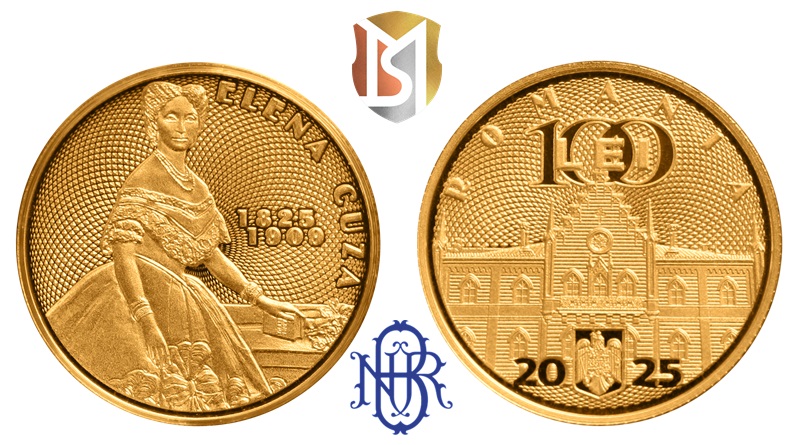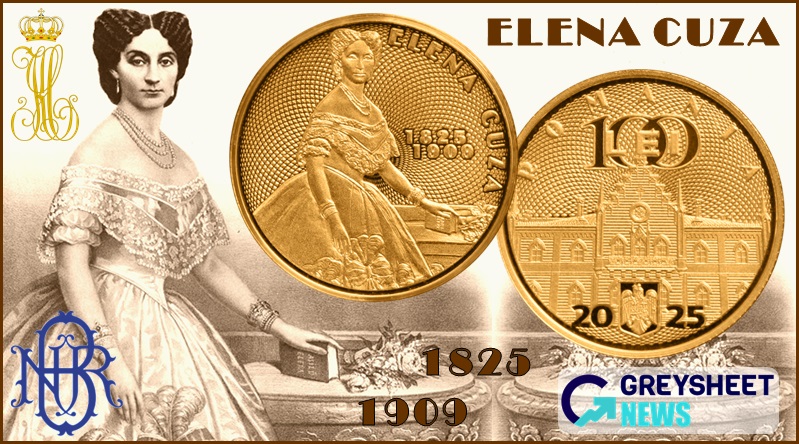2025 marks the bicentenary anniversary of the birth of Princess Elena Cuza, remembered in Romania for her many charitable projects. Elena Cuza was also the first consort of united Romania’s first ruler Alexandru Ioan Cuza. Admired during her lifetime for living a modest life and in the service of others, her activities became a landmark in philanthropy, medical assistance development, as well as in supporting education and culture. At that time, her selfless example had generated other similar initiatives either in public administration or in the private sector. One of her particular projects was the founding of a facility to provide shelter and education to abandoned and disadvantaged children.
Born on the 17th June 1825 into the high-ranking Boyar or Ducal Rosetti family, young Elena received a strict education comparable to that of her older and younger brothers where she was taught French and German. In April 1844 at the age on nineteen, she married Alexandru Ioan Cuza (1820 – 1873) also a member of an influential Boyar family. As a consequence of his double elections to the Romanian Principalities as Prince of Moldavia on the 5th January 1859 and as Prince of Wallachia on the 24th January 1859, this resulted in the unification of the two states. Though Cuza’s authority was not recognised by his nominal suzerain, the Sultan of the Ottoman Empire, until the 23rd December 1861 The union was formally declared three years later, on 5 February 1862. The new country took the name of Romania, with Bucharest as its capital city and Elena as Doamna or, Princess or Romania along with her husband who was known as Domnul or, Prince Alexandru Cuza.
For the first two years of her husband’s rule, Elena lived in Paris to ensure she was away from the political intrigue of the new principality. As Elena learned she could not bear children soon after her marriage, she and Alexandru spent a great time apart. In 1862, Elena returned to her homeland and with great fervour, she began many philanthropic projects in Bucharest and other towns in the country. In July 1862, the cornerstone for the construction of the Lady Elena Asylum was put in place during a ceremony with many high-ranking members of government in attendance. The Lady Elena donated 32,000 lei of her own funds – a sizeable amount for the day and remained actively involved in raising further needed funds for its completion. The institution was one of the most modern in the country with four levels and central heating. The spaces included dormitories, a kitchen, a dining hall, indoor bathrooms, lodging for staff, an infirmary, a pharmacy as well as space for 120 boarding students and 60 off-premises students.
Unfortunately, Prince Alexandru was deposed and later abdicated as Romania’s head of state in February 1866. He, his two sons from his liaison with his mistress, Elena Maria Catargiu-Obrenović – who Princess Elena adopted as her own children went into exile. Prince Alexandru Cuza died in exile in May 1873 while living in Germany and after his death, Elena returned to Romania. She was known to participate in numerous charitable projects, donating much of her allotted income from the state to many causes. In 1909, some weeks before her death, Princess Elena was honoured by the government on the 50th anniversary of the union of the two principalities under her late husband. Romania’s first Doamna, Elena Cuza passed away in the town of Piatra-Neamț on the 2nd April 1909 and was buried in Solești, Vaslui County, the same estate of her childhood and next to her parents.

The gold proof coins are produced by the Monetăria Statului, Romanian State Mint at their facilities in Bucharest on behalf of the National Bank. The obverse side replicates a familiar image of a standing figure of Princess Elena painted by artist Eduardo de Moira in 1861 and lithographed by James Henry Lynch. Along the upper right rim is the text ELENA CUZA and to the right of the portrait, the years of her birth and death, 1825 and 1909. In the background is a fine lenticular pattern which reflects light when the coin is tilted. The reverse side of the coin features an image of the distinctive edifice of the Alexandru Ioan Cuza Palace in the town of Ruginoasa which is centred. Above and superimposed over the Palace along the upper rim is the text ROMANIA and just below is the denomination 100 LEI. Near the lower rim is a small shield of the Romanian crest and the year of issue 2025. In the background is a fine lenticular pattern which reflects light when the coin is tilted.
Denomination Metal Weight Diameter Quality Mintage limit 100 Lei .900 Gold 6.45 g. 21 mm. Proof 1000
Available from the 21st July, each coin is encapsulated and accompanied with a certificate of authenticity containing the signatures of the NBR governor and the central cashier. They are available directly through the Bucharest, Cluj, Iasi, and Timişoara regional branches of the National Bank of Romania. For additional information, please visit the numismatics section of their website.
